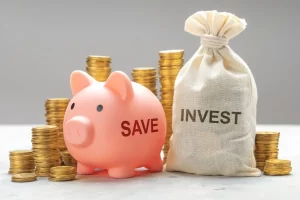- Extra Income
How to Turn a Hobby into a Source of Income

For many people, hobbies are a way to relax, be creative, and escape the daily grind. Whether it’s painting, writing, baking, crafting, playing music, or gaming, hobbies bring joy. But what if your favorite pastime could become more than just a passion? What if it could actually make you money?
Thanks to technology and global connectivity, turning a hobby into a source of income has never been more achievable. From side hustles to full-time businesses, countless people are monetizing their interests—without giving up the fun that drew them in to begin with.
In this article, we’ll guide you through the practical steps to turn your hobby into a legitimate income stream. Whether your goal is extra cash or full financial independence, you’ll learn how to move from passion to profit—without losing what you love.
Why Turn Your Hobby into an Income Source?
1. Do What You Love
Monetizing a hobby allows you to spend more time doing something that energizes you.
2. Create Extra Income
Even a few hundred dollars a month can improve your budget or savings goals.
3. Build a Business You Believe In
Many successful companies started as hobbies—like Apple, Amazon, or Etsy shops.
4. Work Flexibly
Side incomes offer freedom to work from home or set your own hours.
5. Improve Skills
Once you treat your hobby more seriously, your skill level often increases.
Step 1: Identify Your Monetizable Hobbies
Not every hobby will become a full-time business, but many have income potential. Here are common examples of hobbies people are successfully monetizing:
| Hobby | Monetization Ideas |
| Photography | Stock photo sales, portraits, event photography |
| Writing | Blogging, freelance writing, self-publishing |
| Fitness | Online coaching, personal training, fitness content |
| Crafts | Etsy shop, local markets, custom orders |
| Cooking/Baking | Selling food, creating recipes, YouTube tutorials |
| Drawing/Art | Commissions, selling prints or digital downloads |
| Music | Online lessons, streaming, digital album sales |
| Gardening | Selling plants, writing guides, starting a YouTube channel |
| Playing video games | Streaming, eSports, game reviews |
Make a list of your hobbies, and for each one, brainstorm 3–5 ways someone might pay for that skill, knowledge, or output.
Step 2: Define Your Goal
Before turning your hobby into an income stream, ask yourself:
- Do I want this to stay a side hustle, or become a full-time job?
- How much money do I want to make from it?
- How much time am I willing to dedicate weekly?
- Am I willing to treat this hobby as a business?
Your answers will shape how much effort you put in, and what kind of income strategy is best for you.
Step 3: Research the Market
Even the best ideas need a market. Market research helps you find:
- Who is your audience?
- What do they need or value?
- What are they already paying for?
- Who else is offering similar products or services?
Use tools like:
- Google Trends
- Amazon or Etsy search
- Reddit or Facebook groups
- Quora questions
- Keyword research tools like Ubersuggest or AnswerThePublic
Find where your hobby fits—and what gap you could fill.
Step 4: Choose a Monetization Model
There are several ways to earn money from a hobby. You can sell products, services, or content—or a mix of all three.
💡 Common Monetization Models:
1. Sell Physical Products
- Handmade goods (jewelry, candles, art)
- Printed merchandise (T-shirts, mugs, stickers)
- DIY kits or tools related to your hobby
2. Offer Services
- Coaching, tutoring, or consulting
- Custom orders or freelance work
- Workshops or group classes (online or in person)
3. Create Digital Content
- Start a blog, YouTube channel, or podcast
- Sell ebooks, templates, or online courses
- Use affiliate links or run ads on your content
4. Subscriptions or Memberships
- Offer exclusive content to Patreon supporters
- Run a paid newsletter
- Create a membership site for tutorials or downloads
Choose the model that fits your hobby—and your lifestyle.
Step 5: Start Small and Test
Before investing a lot of money or quitting your job, start small. Create a minimum viable product (MVP) or simple version of your offer and test the waters.
Example:
- Instead of launching a full online store, sell a few handmade items on Etsy.
- Instead of writing a full ebook, sell a downloadable checklist.
- Instead of creating a full course, offer a live workshop.
Ask for feedback, track interest, and make improvements before scaling.
Step 6: Set Up Your Online Presence
If you want to make money from your hobby, people need to find you. Start with:
✅ A Simple Website or Landing Page
Use tools like:
- WordPress
- Carrd
- Wix
- Shopify (for stores)
✅ Social Media Profiles
Choose 1–2 platforms where your target audience spends time (e.g., Instagram for visual hobbies, LinkedIn for professional services, TikTok for quick tips).
✅ Payment and Delivery Tools
Set up:
- PayPal or Stripe for payments
- Google Drive or Gumroad for digital downloads
- Calendly or Zoom for appointments
Keep things simple and professional at first.
Step 7: Build an Audience
You don’t need a huge following—but you do need to reach people who care about your hobby.
Ways to Build an Audience:
- Start an email list (offer a free resource in exchange for a signup)
- Post regular tips or progress on social media
- Join forums or groups related to your hobby
- Create a blog or video series sharing what you’ve learned
Remember: audience first, monetization second. People buy from those they trust.
Step 8: Price Your Offer Wisely
Many hobbyists struggle with pricing. Don’t undersell yourself!
Consider:
- Cost of materials or time
- Value you provide to the customer
- What others in your niche are charging
- Your long-term income goals
You can always adjust prices later—but start with confidence in the value you bring.
Step 9: Stay Consistent and Treat It Like a Business
Even if it started as a hobby, once money enters the picture, your mindset needs to shift. Successful hobby-turned-business owners:
- Track income and expenses
- Set monthly goals
- Learn about marketing and customer service
- Treat clients with professionalism
- Invest in tools or training when needed
The more seriously you treat it, the more seriously others will take you.
Step 10: Reinvest and Scale
Once you start making money, consider how to reinvest and grow:
- Upgrade your equipment or workspace
- Outsource tasks like editing or customer support
- Run small ad campaigns
- Launch new products or services
- Turn one-time buyers into repeat customers
Scaling doesn’t have to be complicated—just keep improving what’s working.
Real-Life Examples: Hobbies That Became Income Streams
- A teacher who created and sold lesson plans on Teachers Pay Teachers
- A baker who started with Instagram orders and now has a home-based cake business
- A gamer who streams on Twitch and earns through subscriptions and sponsorships
- A dog lover who began pet sitting and now runs a local pet services brand
- An artist who sells digital illustrations and prints through Etsy and Gumroad
All of them started small—with just a hobby and a willingness to try.
Challenges to Expect (And How to Overcome Them)
❌ Lack of Time
→ Set specific hours each week for your hobby business. Consistency is more important than quantity.
❌ Fear of Failure
→ Think of each step as a learning opportunity. Even “failures” give you valuable feedback.
❌ Impostor Syndrome
→ Everyone starts somewhere. Confidence grows with action and results.
❌ Slow Growth
→ Focus on delivering real value, building relationships, and improving your offer. Growth follows effort.
Final Thoughts: Your Passion Has Value
Turning your hobby into a source of income is more than a dream—it’s a very real and achievable goal. Whether you want to earn a little extra each month or build a thriving business, your skills, knowledge, and creativity can help others—and earn you money in return.
You don’t have to wait for perfect timing or endless resources. Start small. Test your ideas. Share your work. Stay consistent. And enjoy the journey of transforming what you love into something that not only fulfills you—but supports you, too.
Your hobby has value. It’s time to share it with the world.






